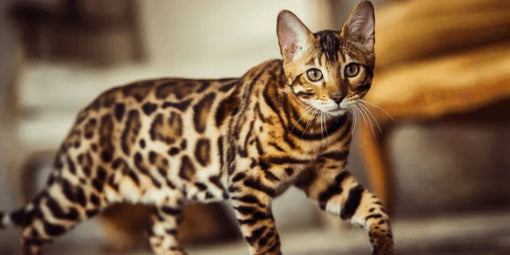
- Article published at:
- Article author: Catherine Ma
- Article tag: Articles
- Article comments count: 0
Drawer menu
Elegant, vocal, and endlessly curious, the Siamese cat is one of the most recognizable and beloved cat breeds in the world. With their striking blue eyes, sleek bodies, and bold personalities, Siamese cats have captivated humans for centuries.
In this guide, we’ll explore the history, personality, appearance, health concerns, and everything else you need to know before bringing a Siamese into your home.
The Siamese cat originates from Thailand (formerly Siam), where it was considered sacred and often kept by royalty. Ancient manuscripts from the 14th century depict cats that look very similar to the modern Siamese.
The breed was introduced to the West in the late 1800s, with the first Siamese cats arriving in Britain and North America as diplomatic gifts. They quickly gained popularity for their striking appearance and vocal personalities.
Over the years, the breed has been refined into two main types:
Traditional Siamese (also called “Applehead”): Rounder face and more robust build.
Modern Siamese: Slender body, wedge-shaped head, and large ears.
Both types share the same intelligence and affectionate nature.
Siamese cats are known for being outgoing, talkative, and intelligent. If you’re looking for a cat that acts more like a social butterfly than an aloof feline, the Siamese is for you.
Highly vocal: Siamese cats love to “chat” with their humans using a loud, raspy meow.
Affectionate and loyal: They bond closely with their family and often choose a favorite person.
Intelligent and curious: Siamese cats enjoy puzzle toys, games, and learning new tricks.
Attention-seeking: They thrive on interaction and may get lonely if left alone too often.
Because of their people-oriented nature, Siamese cats make excellent companions—but they do best in homes where someone is around regularly.

Siamese cats are sleek, graceful, and elegant. They typically weigh 6–14 pounds, with females usually being smaller than males.
Almond-shaped blue eyes
Short, fine coat that’s soft and close to the body
Color-pointed pattern – darker color on ears, face, paws, and tail
Long, slender body and tail
Large, upright ears
Their color-point pattern is caused by a temperature-sensitive gene: cooler parts of the body develop darker pigment, while warmer parts remain light.
Siamese cats have a distinctive coat pattern and come in a variety of point colors:
Seal Point: Dark brown points with a cream or fawn body
Blue Point: Soft gray-blue points and bluish-white body
Chocolate Point: Milk chocolate points with an ivory body
Lilac Point: Pale gray-pink points with a white body
Other less common colors include red (flame), cream, and tortie points.
Regardless of color, all Siamese kittens are born white and develop their point coloration as they grow.

Siamese cats are generally healthy, but they do have some breed-specific health risks to watch for:
A genetic condition that causes gradual vision loss and can lead to blindness.
Due to their narrow heads and elongated noses, some Siamese cats may be prone to asthma or other respiratory concerns.
Historically common in Siamese cats. While often harmless, these traits are less common in show lines today.
Like many indoor cats, Siamese can gain weight if not given enough exercise. Their slim build makes extra pounds noticeable.
💡 Tip: Choose a reputable breeder who screens for genetic conditions, and schedule regular vet visits to catch any early signs of illness.
Siamese kittens are energetic, vocal, and affectionate from the start. They crave attention and stimulation, so be prepared for a lively home!
If you’re planning to bring one home:
Work with a licensed, ethical breeder who follows CFA or TICA standards.
Expect to pay $900–$2,000+ CAD, depending on lineage and color.
Consider adopting from a breed-specific rescue—Siamese mixes are fairly common in shelters.
Siamese cats also do well in pairs—especially if you're away during the day.
Siamese cats thrive in interactive, social households. They're not the best fit for quiet, hands-off homes.
To create a happy Siamese-friendly environment:
Cat trees and shelves – they love to climb and perch.
Interactive toys – puzzle feeders, chase toys, and tunnels keep them engaged.
Companionship – either from humans or another cat.
Windows and perches – they love to observe the world.
🪴 Catopia Co. Recommends:
Our vertical cat trees give energetic Siamese cats space to climb, scratch, and play—all while blending beautifully into your home.
👉 Explore Siamese-Friendly Floor-to-Ceiling Cat Trees
Adoption: $100–$250 CAD from a rescue or shelter.
Purebred kitten from a breeder: $900–$2,000+ CAD depending on pedigree.
Rare or show-quality Siamese: Prices may exceed $2,500.
Don’t forget to budget for toys, food, vet care, and environmental enrichment.
The Siamese cat is a confident, curious, and charismatic feline companion. Whether you're drawn to their dazzling blue eyes or their constant conversation, Siamese cats make unforgettable pets.
They do best with humans who are just as social and playful as they are—and with a stimulating, cozy space to call their own.
👉 Make your Siamese feel at home with this deluxe, stylish, floor to ceiling cat tree from Catopia Co.
